




e pet food market continues to grow and a record 70% of American households now own at least one pet. While the sharp increase in pet ownership experienced during the pandemic has levelled out, ownership levels are still steadily increasing while generating new potential for pet food manufacturers who can meet the demands of these consumers.
One of the overall drivers behind all current pet trends is how close owners feel to the cats, dogs, and other animals under their care. About 88% of pet owners consider their pets to be part of their family, and 66% let pets sleep with them in bed, according to a survey by YouGov. is closeness means pet owners are putting as much emphasis on their pets’ health as they would any other family member, which is driving their preferences when it comes time to purchase pet food.
As a result, it’s no surprise that a survey by the American Pet Products Association found that 50% of respondents prefer pet food and other pet products that consider “humanization, premiumization, and sustainability.” Some consumers are even looking for the same ingredients in their pet food that they’d expect in their own, with 19% reporting they prefer non-GMO ingredients and 13% preferring human-grade ones.
“Many of today’s consumers expect their pets’ foods to be made from ingredients on par with their own meals,” said Mark Lotsch, President, Global Health & Wellness at ADM. “ is increasing humanization of pets is cultivating a holistic approach to pet well-being, including weight management, digestive health, and customized, premium solutions. With these key consumer insights in mind, innovations in pet nutrition and wellness solutions will help satisfy pet parents’ latest demands.”
(Continued on page 2)
www.foodexport.org

Even pet owners who aren’t set on human-grade food are interested in foods that are better for their companions, and many are seeking foods made with “natural” ingredients that are more similar to what wild cats or dogs would encounter in their natural habitats. One example of this trend is “kibble plus,” a mixture of kibble and pieces of freeze-dried meat and vegetables, that has grown to account for 9.5% of pet food sales. Dehydrated, freeze-dried, and frozen foods are also on the rise.
APEC suggested that manufacturers can capitalize on this trend by looking closely at the ingredients they use and considering including items that are GMO-free or sustainably grown. Emerging options like dehydrated pet food is also an area where major players can expand their capabilities through acquisitions.
Holistic Health Benefits Matter
Pet owners want to see genuine bene ts from the food they choose. A report by ADM found that 57% of global pet owners say health claims are important when choosing pet food to purchase. ese claims don’t just have to be about physical health, as 33% of U.S. pet owners want to see calming and anxiety relief bene ts.
e most common health claim on pet food is “high protein” followed by “natural,” according to a study by Euromonitor. Usage of ingredients touting antioxidants, vitamins, and immune system health have also grown while label claims like “clinically tested,” “scienti cally studied,” and “vet recommended” are of particular importance on treats and supplements.
More than 42% of pet owners want pet foods with sustainably sourced ingredients, and 72% say they will pick one pet product over another if they deem it to be more environmentally friendly.
Ernie Ambrose, Director of Innovation for ORIJEN and ACANA pet food, believes that the creation of custom meals for pets could become a trend in its own right. e increased humanization of pets means more owners believe their pets could experience avor fatigue as a human would, and they will seek out a variety of avors while maintaining a focus on products with health bene ts.
Another area where pet and human ingredient demands meet is sustainability.
More than 42% of pet owners want pet foods with sustainably sourced ingredients, and 72% say they will pick one pet product over another if they deem it to be more environmentally friendly.
Interest in sustainability is also driving product development with alternative proteins including insect-
based products, according to C&D Foods. is trend is still in its infancy but is another sign that pet owners are interested in the same food trends for their animals as themselves.
Alternative proteins and health-focused ingredients can drive up prices, which can be a tricky balancing act in times of economic uncertainty. Experts have found, however, that

meals. Euromonitor projected that premium pet food sales could hit $59.2 billion in annual sales by 2027 – an estimated 70% increase from 2017 – and leaders from Chewy and Petco have noted that they aren’t seeing a trend away from premium options despite in ation.
“For years, the pet care industry in developed markets has been boosted by the constantly-evolving trend to premiumization – pet food which boasts healthy or exotic ingredients and which persuades owners they are giving their pets the products they deserve,” said Anne Scott Livingston, Research Analyst at Euromonitor. “ is is particularly true in the U.S., on the back of high standards of living, and highly developed retail infrastructure and consumption habits. A parallel trend in premiumization can be seen in the growth of higher-priced, value-driven products – perhaps exempli ed by considerations of sustainability, with a growing number of consumers prepared to pay a premium for products that promise minimal environmental impact.”
Livingston was less bullish on this trend’s ability to continue despite in ationary pressure. She noted that “premium brands are still expected to grow faster than economy- and mid-priced brands, but the brands in lower-price tiers are clearly being boosted, as more consumers are forced to trade down amidst drastic price




While supply chain pressures have eased from their heights in 2022, some food ingredients are still in short supply and the ongoing labor shortage and the war in Ukraine continue to impact availability.
One of the recent problems faced by manufacturers is a decline in egg and poultry availability due to an outbreak of avian in uenza in the U.S. is has led to the culling of more than 57 million chickens over the past year according to data from the Centers for Disease Control and Prevention.
Tomatoes are also in short supply due to the ongoing drought in California. Water shortages have led to fewer tomato plants being grown – with some of those yielding no crops – which has in turn led to shortages of ingredients for foods like ketchup, pizza sauce, and marinara.
An ongoing shortage is grain, particularly wheat, due to the aforementioned RussiaUkraine war. Approximately 20% of the world’s cereal grain production comes from those two countries, and the con ict is straining supplies as well as the availability of edible oils.
Beef isn’t in short supply just yet, but it could dwindle later in 2023. Texas was caught in its own drought during summer 2022, which forced ranchers to sell o cattle earlier than expected. is led to higher slaughter levels in the second half of the year, creating a surplus, but that could turn into a shortage before ranchers can repopulate herds and return to equilibrium.
Manufacturers are likely to follow a number of di erent paths to manage these ingredient shortages. A July 2022 survey by ingredient information service TraceGains found that 37% of manufacturers had modi ed formulations for 20 or more of their products while another 25% did so for between six and 19 products. Almost 50% had halted production on some products altogether while 69% expanded their supplier networks.
Even major companies are facing these challenges. For instance, a lack of available tapioca starch led General Mills to reformulate Totino’s pizza rolls to use cornstarch instead. Suppliers with alternatives to ingredients in short supply could nd new business if they keep alert for potential product developments.




The U.S. ambassador for food has warned that the global food price crisis will continue this year. Supplies will not be safe until the Russian invasion of Ukraine has ended. Cindy McCain, the U.S. ambassador to the U.N. agencies for food and agriculture, laid the blame for soaring prices squarely on Russia and Putin’s invasion of Ukraine, reported The Guardian
Executives at cultivated meat companies are optimistic the product could reach U.S. restaurant menus as early as this year. To reach supermarket shelves, however, cultivated meat faces big obstacles, including the need to expand production and overcome consumer sentiment, reported Reuters.
Social omnivores are vegetarians only when eating at home. And they’re part of a growing trend of eaters who prefer the middle ground to all in or all out on meat, reported Bon Appetit


Dollar stores are now the fastest-growing food retailers in the contiguous U.S. Tufts University researchers have found that these retailers are doubling their share in rural areas. According to the study, households with more purchases at dollar stores also tend to be lower-income and headed by people of color, reported Medical Xpress
Google revealed its most searched terms regarding product searches and trending dishes. Some examples of the former were sriracha shortage, Adderall shortage, and cream cheese shortage, while the latter included Cincinnati chili, “Marry Me” chicken, green goddess salad, and a spaghetti dish inspired by Chicago cooking show The Bear, reported Progressive Grocer.
e U.S. Foodlink newsletter and e-mail bulletin are brought to you by the Food Export Association of the Midwest USA and Food Export USA–Northeast, two state regional trade groups located in the U.S. that promote exports of U.S food and agriculture. Food Export–Midwest and Food Export–Northeast administer many services through Market Access Program (MAP) funding from the Foreign Agricultural Service (FAS) of the USDA. U.S. Foodlink was created to provide readers credible data and information in an easy-to-read format.
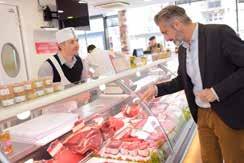

The protein category is defined by consumers by two qualities: trust and transparency. According to a recent report by The Food Industry Association (FMI) and NielsenIQ, 72% of shoppers say transparency is tantamount to trust, especially at the butcher and in the meat aisle.
A study found that 58% of Americans are eating smaller portions since the outset of the COVID-19 pandemic. The 2022 study, led by Georgetown University, also noted that 50% of study respondents are choosing more portion-controlled snacks such as 100-calorie packages.
Non-chocolate candy is outperforming most candy categories around the store. The trend is driven by strong dollar, unit, and volume growth over the past year. The National Confectioners Association and IRI noted that the category’s dollar sales increased by 13.7% and units by 3.1%.
The melt-in-the-mouth sensation of chocolate comes down to the way it lubricates the tongue. At the University of Leeds, the study’s lead researcher, Dr Siavash Soltanahmadi, said the findings could be used to design lowfat chocolate that mimics the sensation of a high-fat product, reported The Guardian
Consumers are interested in living a sustainable, healthy lifestyle and enjoying globally influenced foods. These will be among the top trends in 2023, according to a forecast from KeHE Foods. The report cited data from Mintel showing that 78% of consumers believe healthful eating is important for emotional well-being.

Brendan Wilson Executive Director/CEO
Greg Cohen Communications Manager
Food Export Association of the Midwest
309 W. Washington, Suite 600 Chicago, IL 60606 USA 312.334.9200
Michelle Rogowski Deputy Director
Teresa Miller Strategic Partnerships Manager
Molly Burns Branded Program Manager
Food Export USA – Northeast One Penn Center 1617 J.F.K. Boulevard, Suite 420 Philadelphia, PA 19103 USA 215.829.9111
Laura England Deputy Director
Howard Gordon Branded Program Manager
www.foodexport.org
Comments, Questions, email: info@foodexport.org
The U.S. Foodlink newsletter is available every other month, in many countries around the world. Find out how to access the newsletter in your country by sending an e-mail to info@foodexport.org.
Food Export - Midwest & Food Export - Northeast
Food Export - Midwest & Food Export - Northeast
Food Export - Midwest & Food Export - Northeast
foodexportsusa


Nevada, Missouri
Sweeter and More Flavorful Pecans We are a farmer-owned company formed in 2000 by several local pecan farmers. Today we have more than 50 area farmers. We specialize in native pecans that have a much higher oil content and superior flavor and are smaller in size compared to southern hybrid varieties. Our pecans are 100% grown and processed in the U.S. Our processing facility is HACCP certified, FDA compliant and 3rd party audited. Our product offerings include certified Organic and non-Organic Pecans, Pecan Oil and Pecan Meal-Flour. We take pride in producing sustainable, single ingredient, heart-healthy products that contain zero additives, preservatives or genetically modified derivatives.
Certified Organic | Gluten Free | Non-GMO | Kosher | Vegan friendly | HeartHealthy | Keto, Paleo and Whole30 compliant | No preservatives or artificial ingredients mopecans.com
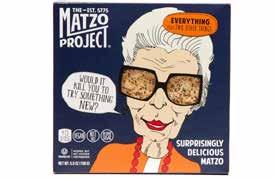
Brooklyn, New York
The Matzo Project introduces carefully made, artfully packaged, legitimately scrumptious matzo. In addition to our Matzo flats and Matzo Chips in Salted, Everything, Harissa and Cinnamon Sugared flavors, The Matzo Project has all-natural, vegetarian Matzo Ball and Matzo Ball Soup Kits.
Nut-free | Vegan | Kosher | Dairy-free matzoproject.com
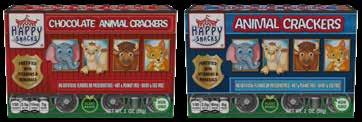
Park City, Illinois
Happy Snacks brand animal crackers are a functional, plant-based snack unique to the category. Our family-oriented grab & go impulse items are targeted to people wanting a “conscious indulgent” snacking option with vibrant, nostalgic packaging. Because they are nostalgic, they appeal to all generations – not just children.
Non-GMO | Nut, peanut, egg, and milk free | Fortified with essential vitamins and minerals marketsquarefood.com
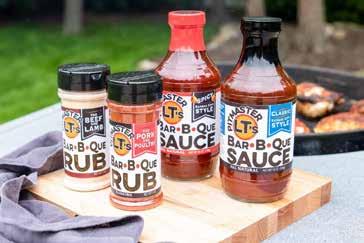
Shawnee, Kansas
Pitmaster LT’s barbecue sauces and dry rubs are the creations of Kansas City area resident Luther “LT” Tooks who, after his American military service, began experimenting with making his own barbecue sauce and seasonings. Those experiments lasted for the better parts of three decades, until he perfected his secret recipes now known as Pitmaster LT’s sauces and dry rubs. All natural with a distinctively Kansas City-style barbecue taste and texture, Pitmaster LT’s sauces appeal to a broad variety of BBQ palates. The dry rubs are crafted of premium ingredients. pitmasterlt.com
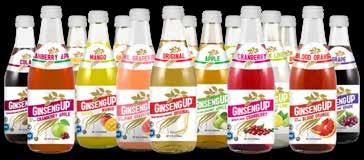
Worcester, Massachusetts
Ginseng UP Corporation, is a 40+ year old domestic, international, natural and crafted carbonated and non-carbonated beverage company including branded, contract pack, private label, ingredients-concentrates-extracts manufacturing, licensing and beverage consulting.
Functional Ingredients | Premium natural ginseng and ingredients | Non-GMO | Gluten Free | Kosher ginsengup.com

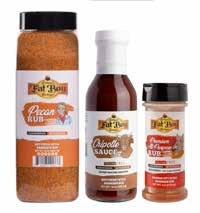
Lincoln, Nebraska
Born from competitive grilling and incorporated in 2002, Fat Boy BBQ was created to market rubs used in competition. The skills mastered in these competitions and the knowledge obtained from other barbeque experts led to the development of our all natural barbeque products. Over time our first rub evolved into our current line of fifteen rubs, several of which have won national awards. Each is distinctive in taste, heat level, and texture. Our rubs seal the meat surface to offer a juicy and flavorful meat product. Fueled by the popularity of our rubs, the company expanded to include a new concept in barbecue sauces. Unlike some sauces on the market, our variety of nine Kansas City, Southern, and Southwest-style sauces are thick with seasonings and a fullness of flavor that delights the taste buds. The line also includes an apple cider honey mustard sauce. bestnaturalbbq.com

Commerce Twp, Michigan
Zolli Candy is America’s fastest growing candy company according to The Financial Times/Statista & Inc.5000. Zolli Candy offers Zollipops, Zolli Ball Popz, Zolli Drops, Zaffi Taffy, Zolli Caramelz & Zolli Snow BallZ. Supported by marketing, media, content, and influencers to drive trial & ongoing sales. Zolli Candy and its 17-year-old founder Alina are verified influencers. Zolli Candy is seeking international distribution partners.
Zero sugar | Vegan | KETO | Allergy-free | Gluten-free | Natural flavors | No artificial colors. @Zollicandy, @zollicandy or zuper_candy_girl @Zollicandy, @Zollicandy zollicandy.com
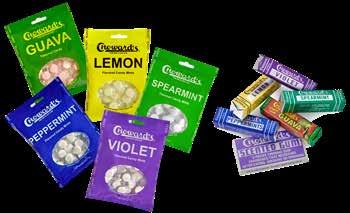
C. Howard Company Inc. was started in New York City in the early 1930s by Charles Howard who, while searching for a unique and different flavored candy, concocted a delightful confectionary mint called Choward’s Violet in a small industrial loft on Broadway. His first retailing experience was selling Choward’s Violet on the street corners in Manhattan, where the product’s reputation grew.
On the heels of Choward’s Violet success, came a purple-colored gum tablet called Choward’s Scented Gum. In years to come, Charles Howard expanded his candy line to include Choward’s Peppermints, Spearmints, and Lemon Mints. chowardcompany.com

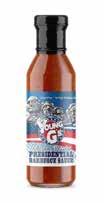
While proudly serving the U.S. military, Young G’s founder Gerald Young missed many of the comforts of home. Being so, Gerald’s father Ronald, gave his secret barbecue sauce recipe (wildly popular within the Young family’s circle) as a homecoming gift. Young G’s product line now includes their famous Young G’s BBQ Sauce but also has Original Recipe Sauce, Presidential BBQ Sauce, Salad Dressing, and Pizza Topping aka Pizza Pep Sauce!
Nutritionist oriented | Low sodium | No HFCS ygsbbq.com